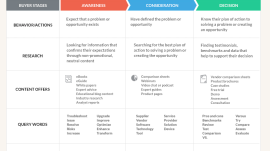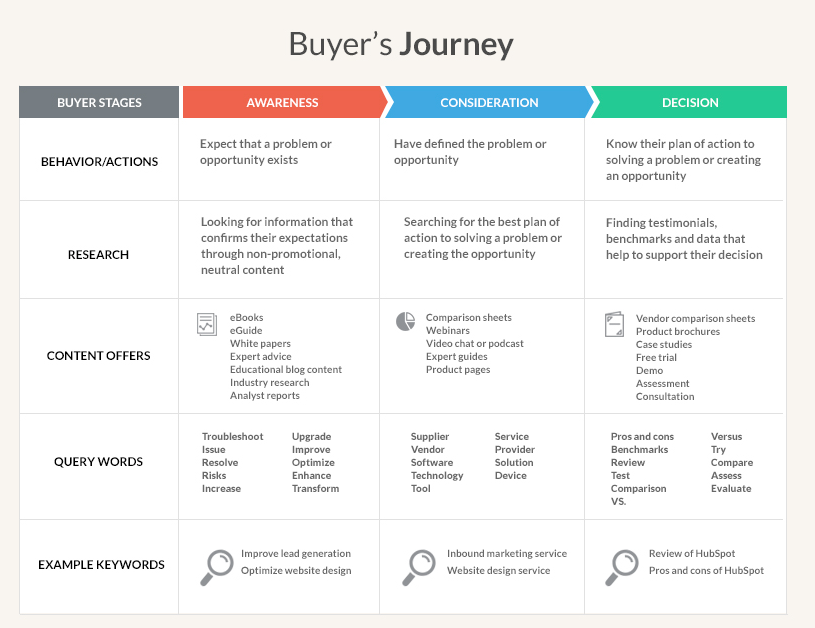What is the Buyer’s Journey, and How Does it Relate to SEO?

The Buyer’s Journey is the typical process by which a consumer comes to a decision to purchase a product or service. It consists of 3 distinct phases: Awareness, Consideration and Decision. By using different Search Engine Optimization strategies, it’s possible to deliver content to buyers that’s distinct for each phase of the Journey.

For the Awareness stage, you don’t want to talk a lot about your brand specifically- at this point, potential customers are exploring; evaluating all the competing vendors and getting rid of ones that don’t have features or options they will obviously need. SEO via content marketing is a good strategy to attract potential buyers that don’t know they specifically need you yet, and demonstrate your expertise, which helps to build trust. Traditional marketing initiatives such as branding and publicity can also tie in with SEO at this point; any “real-world” marketing activities should reference people to your online presence, to get them “in the system”, get their contact information for remarketing, and generally drive organic traffic to the website. Make sure your site structure is optimized against your keyword research, and broken down into an organizational format that makes sense from a robot’s perspective, but also serves the user. Social media can also have an impact, a site like Quora or an industry forum would be a good place to introduce people to your brand- but be careful not to be too pushy at this stage. Your content should mainly be focused on your customer’s issues, not your product’s benefits.
Once the client is aware that they have a problem and that there are vendors offering solutions to said problem, the Journey moves into the Consideration phase. Users will reach out to sales people to hear the pitch, request a demo, and compare and contrast competitors. At this phase of the Journey it makes sense to target customers with pages with contact information forms and to have pages on your site where you compare/contrast competitors. This has the benefit of semantic association with similar service providers (for the bots) and good potential to rank for competitor keywords as well. Consider the following:
A Customer searches for “Brand A vs. Brand B”. However, this is a niche product and there hasn’t been much written about it- if Brand A has a page comparing itself to Brand B and brand B doesn’t, Brand A is going to scoop up that traffic every time. This is a perfectly valid and legitimate Search Engine Optimization strategy- if the potential customer wants a comparison and you serve up a comparison where no one else does, you are meeting their need better and so you rank higher.
It’s also important to design and present content that shows the ROI of your solution, because in this phase those doing the research will also need to justify the cost to those signing the checks.
At the Decision phase, the User has their decision narrowed down to just a few choices. They will be looking for specifics about customer support, testimonials and reviews from current clients. Information about implementation and how simple your product or service is to use could help win over a tough prospect, as could a well-written white paper or case study about a client you’ve helped. You want to speak the specific language of the decision maker, and refer to successes in the same niche in your communications.
Guide the buyer through their journey, and the reward will be better ROI from your SEO!
Tagged Under: buyers journey seo
